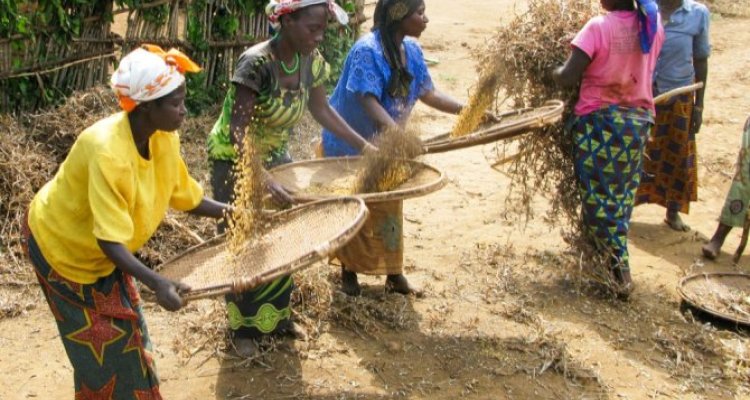
Impact story
Improving legumes for Africa
How can we solve hunger? There is no simple solution to this question. In a ten-year project, N2Africa, Wageningen University & Research focuses on local relevance: matching the best technology to the region.
N2Africa, as the name suggests, starts with nitrogen (N2). Nitrogen is an essential nutrient for plant growth. Almost 80 per cent of our atmosphere is made up of this substance, but plants can only extract nitrogen from the soil. That is: plants alone. Legumes such as soybeans or broad beans may collaborate with rhizobium bacteria. These soil bacteria transform nitrogen from the atmosphere into building blocks for plants, enabling them to grow in low-nitrogen soil. This process is called nitrogen fixation.
Although nitrogen fixation has a lot of potential, simply introducing farmers to it is insufficient. Testing the technology and adjusting and aligning it to various specific and local circumstances was equally important. ‘It is all about the context’, professor of Plant Production Systems and the project leader, Ken Giller, underscores.
An upward spiral
What works where, why and for whom? These questions are leading in the N2Africa project’s work on nitrogen fixation. With thousands of small farmers in African countries, Wageningen University & Research (WUR) researchers studied what combination of legumes and rhizobium varieties led to the best nitrogen fixation strategies for specific environments and farming systems.
The project went through a finetuning trajectory by analysing the field test results and combining them with fundamental research—an upward spiral, so to speak, of interaction between theory and practice.
The study focused on the main legume varieties: beans, cowpeas, peanuts and soybeans. Flat beans and chickpeas were added for the cooler climate in the Ethiopian highlands. The first convincing results were registered with soybeans, which were often grown for the first time. The soybean requires a somewhat unique bacterium, making it the ideal research situation. The yield increased significantly. Other legumes required multiple feedback loops. But there, too, the yields were increased using better plant varieties, better management and new methods of introducing the bacteria to the plant.
600,000 farmers reached
To improve the dissemination of information on legume farming methods, N2Africa contributed to the founding of an ‘alliance for legumes’ with similar organisations. Their goal was to make the available information clearer and more consistent so that new methods would be adopted more frequently and successfully. The alliance reached some 600,000 farmers, providing them with information and gathering data in return.
Interviews with 2,600 farmers in northern Tanzania showed that the availability of seeds was an issue. This feedback prompted the alliance to include seed distributors and government institutes, which bought more seeds. Thus, the project achieved better results by taking feedback into account.
With the N2Africa project, WUR started with the best technology and refined their application by continuously using feedback from the practical application in their research. Thus, nitrogen fixation attuned to local circumstances could flourish in the fight against hunger.